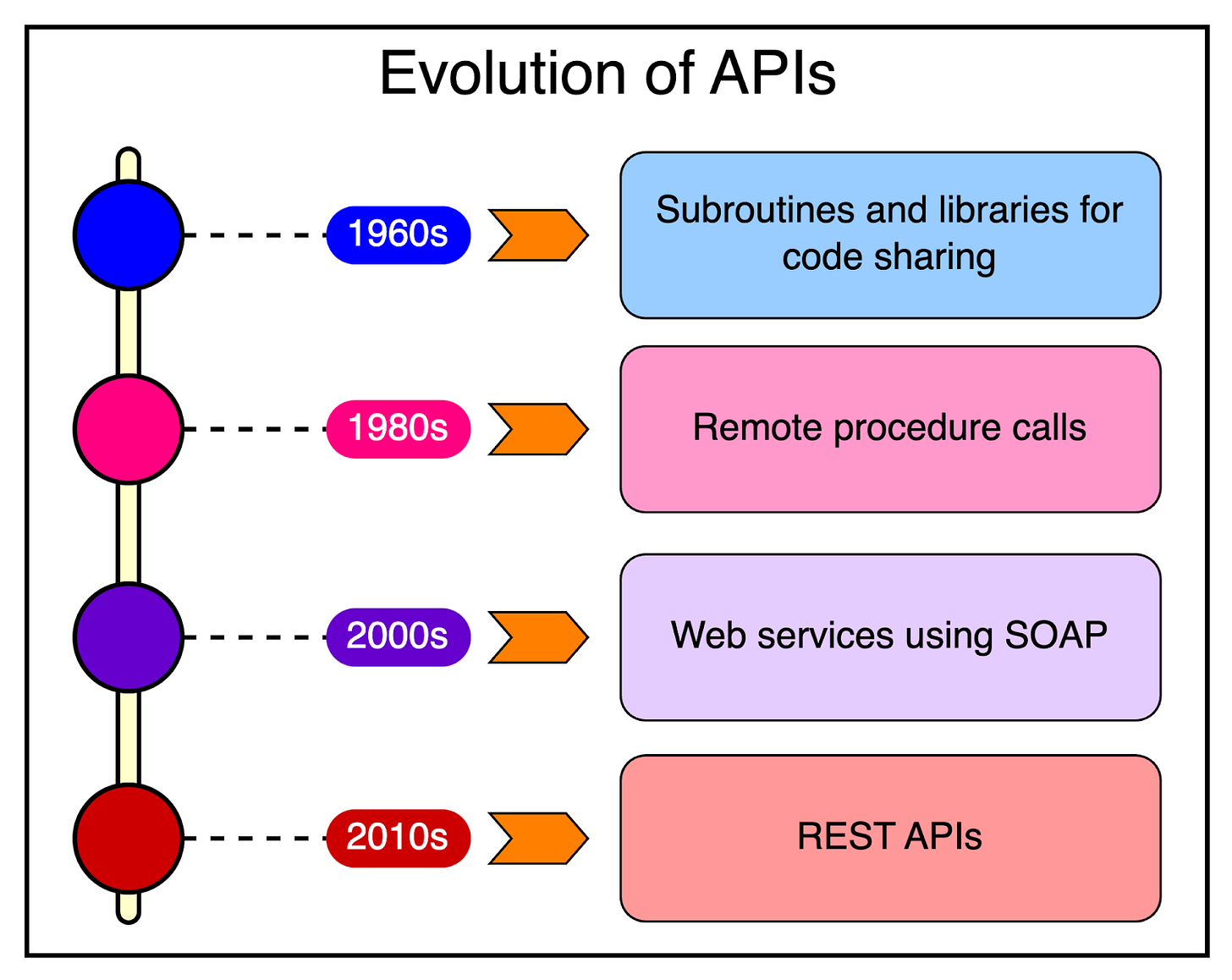A Crash Course on REST APIs
Application Programming Interfaces (APIs) are the backbone of software communication.
In the acronym API, the word “Application” refers to software that performs a distinct function. An “Interface” is a contract between two applications that defines a set of rules, protocols, and methods for communication. “Programming” makes all of this possible.
APIs have been around for a long time in one form or the other:
In the 60s and 70s, we had subroutines and libraries to share code and functionality between programs.
In the 1980s, Remote Procedure Calls (RPC) emerged, allowing programs running on different computers to execute procedures on each other.
With the widespread adoption of the Internet in the 2000s, web services such as SOAP became widely adopted.
The late 2000s and early 2010s marked the rise of RESTful APIs, which have since become the dominant approach due to their simplicity and scalability.
In recent years, the API-first approach to software development has gained significant traction, driven by the emphasis on building loosely coupled services. REST APIs, in particular, have emerged as the go-to choice for developers worldwide.
In this post, we will explore the world of REST APIs and cover basic to advanced concepts.
Introduction to REST APIs
Keep reading with a 7-day free trial
Subscribe to ByteByteGo Newsletter to keep reading this post and get 7 days of free access to the full post archives.


